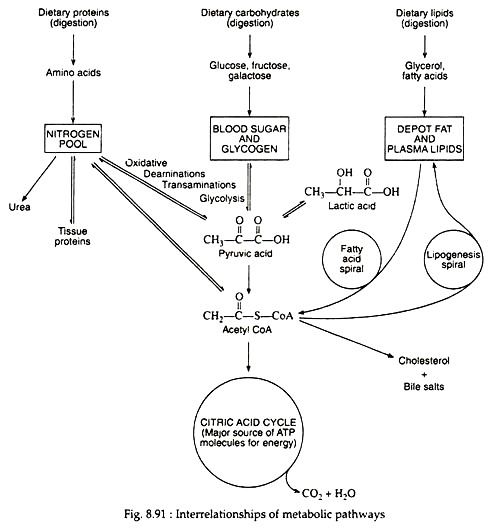In this article we will discuss about the interrelationships of metabolic pathways .
A great variety of organic compounds can be derived from carbohydrates, lipids, and/or proteins. All organisms utilise the three major foodstuffs to form acetyl CoA or the metabolites of the Krebs cycle. These, in turn, supply energy upon subsequent oxidation by the cycle. A brief summary of the interrelationships of the metabolic pathways is given in Fig. 8.91.
Notice that one nonreversible reaction is the conversion of pyruvic acid to acetyl CoA. Thus an acetyl CoA molecule derived from fatty acid degradation cannot be directly transformed into pyruvic acid. There is, therefore, no direct route for the synthesis of carbohydrates from fatty acids.
ADVERTISEMENTS:
Plants and some microorganisms that can convert fatty acids to carbohydrates and proteins utilize a series of enzymic reactions not found in animal tissues referred to as the glycolate cycle.
